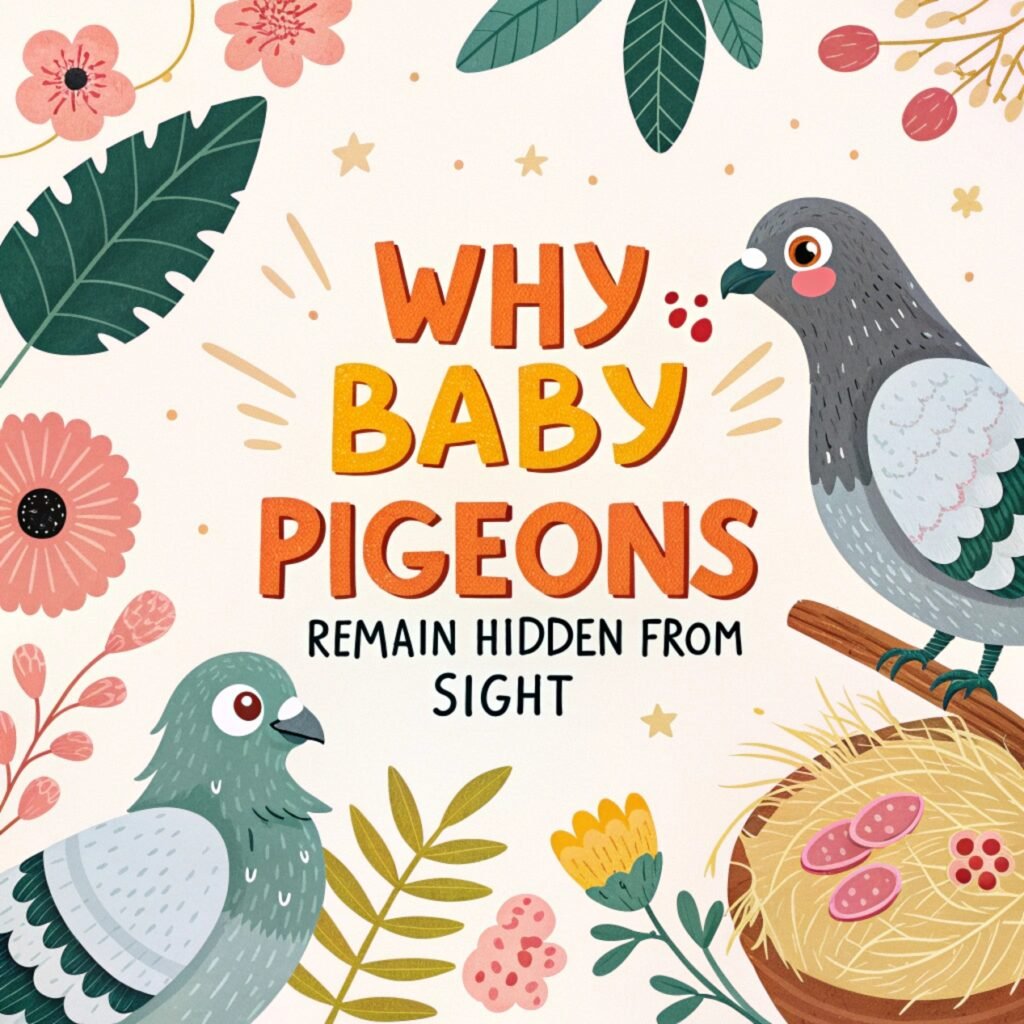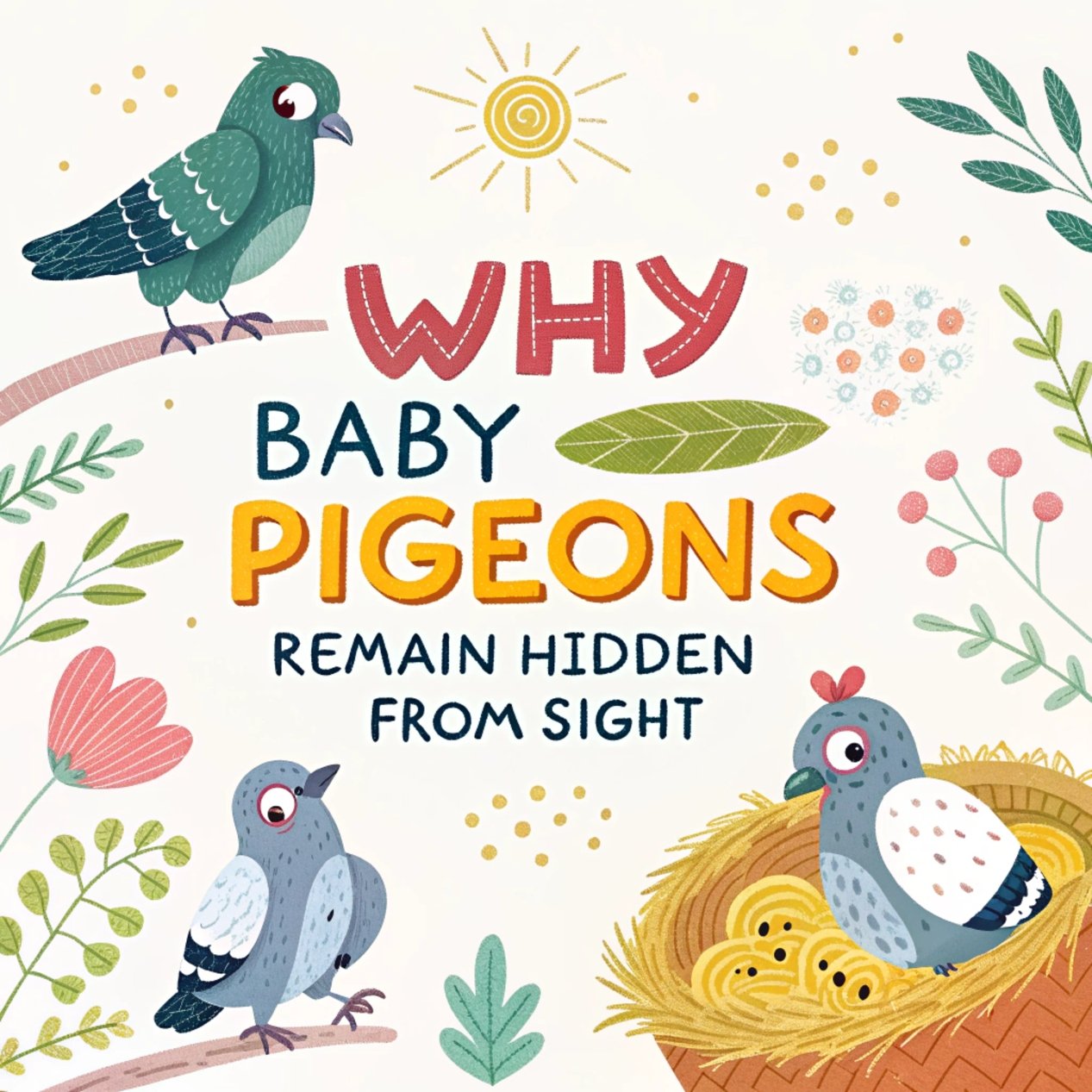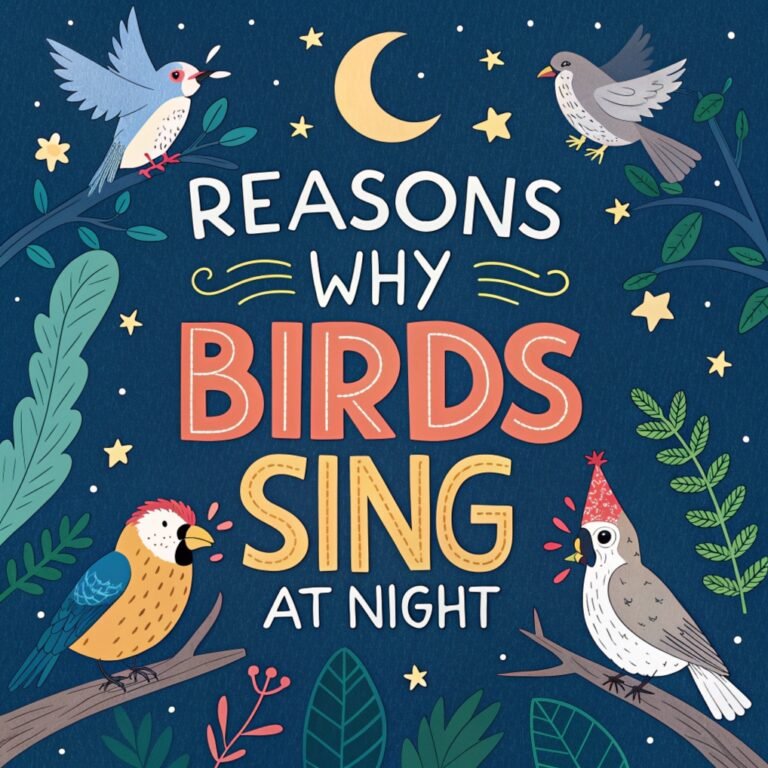Why Baby Pigeons Remain Hidden from Sight – Exploring the Mysterious World of Squabs
Baby pigeons, also known as squabs, are rarely seen in urban environments, leading to curiosity and even conspiracy theories about their existence.
This phenomenon has a logical explanation rooted in the biology and behavior of pigeons.
Let’s delve into the fascinating world of these elusive young birds and uncover the reasons behind their apparent absence from our daily lives.

Key Takeaways:
- Baby pigeons spend 3 to 6 weeks in the nest before fledging
- Pigeon nests are often located in hard-to-reach places, out of human sight
- Squabs grow rapidly and resemble adults by the time they leave the nest
- Pigeons are altricial birds, meaning their young are helpless at birth
- Feral pigeons have adapted to urban environments for nesting
- The survival rate of young pigeons is relatively low in their first year
- Pigeons have a unique feeding method called crop milk for their young
- Juvenile pigeons can be identified by subtle differences from adults
- Pigeon parents are highly devoted to their offspring during the nesting period
- Understanding pigeon biology helps dispel myths about their reproduction
The Hidden Nesting Habits of Pigeons: Why Their Babies Remain Out of Sight
Pigeons have adapted remarkably well to urban environments, utilizing man-made structures as substitutes for their natural cliff-dwelling habitats.
These birds cleverly choose nesting sites that are often out of human view, such as rooftops, bridges, and high-rise buildings. This preference for elevated and concealed locations is a key factor in why baby pigeons are rarely seen.
The nesting behavior of pigeons is designed to protect their vulnerable offspring from predators and harsh weather conditions.
By selecting spots that are difficult for humans and other animals to access, pigeons ensure a safer environment for their young to develop.
This strategy has proven successful in allowing pigeon populations to thrive in cities worldwide, despite the challenges of urban living.
From Egg to Fledgling: The Rapid Development of Baby Pigeons

The life cycle of a baby pigeon is fascinating and relatively quick compared to many other bird species.
When a squab first hatches, it is pink-skinned, featherless, and completely helpless. However, these young birds undergo a rapid transformation over the course of their time in the nest.
Within the first few days, baby pigeons begin to develop a covering of soft, yellowish down. As they grow, pin feathers start to emerge, giving the squabs a rather scruffy appearance.
By the time they are ready to leave the nest, usually around 4 to 6 weeks of age, young pigeons have developed most of their adult plumage and are nearly indistinguishable from their parents in size.
The Extended Nestling Period: Why Pigeons Stay in the Nest Longer
Unlike many other bird species, pigeons have an unusually long nestling period. This extended time in the nest is crucial for the development of young pigeons and contributes significantly to their ability to survive once they fledge.
During this period, which can last up to six weeks, the squabs undergo remarkable growth and maturation.
The prolonged nestling stage allows baby pigeons to develop strong muscles and fully-grown feathers before venturing out into the world.
This strategy ensures that when they do leave the nest, they are better equipped to evade predators and integrate into pigeon flocks.
The extended care provided by pigeon parents during this time is essential for the survival of their offspring in challenging urban environments.
Pigeon Parenting: The Dedicated Care of Squabs

Pigeon parents are remarkably devoted to their young, providing constant care and nourishment throughout the nestling period.
Both male and female pigeons participate in incubating the eggs and caring for the squabs, taking turns to ensure their offspring are never left unattended.
One of the most fascinating aspects of pigeon parenting is their unique method of feeding their young.
Pigeons produce a nutrient-rich secretion called crop milk, which they regurgitate to feed their babies.
This high-protein substance is essential for the rapid growth and development of squabs during their time in the nest.
The dedicated care provided by pigeon parents contributes significantly to the survival and successful fledging of their young.
The Fledgling Stage: When Baby Pigeons Finally Emerge
When baby pigeons finally leave the nest, they are already quite similar in appearance to adult pigeons.
This similarity is one of the main reasons why people rarely notice young pigeons in urban environments.
At this stage, fledglings are nearly fully feathered and close to adult size, making them difficult to distinguish from their parents at a glance.
However, there are subtle differences that can help identify juvenile pigeons. Young birds often have darker eyes compared to the orange or red eyes of adults.
Their feathers may appear slightly more ragged or less sleek than those of mature pigeons. Additionally, fledglings might exhibit more clumsy behavior as they learn to navigate their new environment and perfect their flying skills.
Urban Adaptation: How Pigeons Thrive in City Environments
Pigeons have successfully adapted to urban environments, earning them the nickname “rock doves” due to their ability to utilize buildings and other structures as substitutes for their natural cliff habitats.
This adaptability has allowed pigeon populations to flourish in cities around the world, despite the challenges posed by urban living.
The ability of pigeons to nest in a variety of locations, from ledges and windowsills to air conditioning units and abandoned buildings, has contributed to their success in urban areas.
This flexibility in nesting sites, combined with their rapid reproductive cycle and the abundance of food sources in cities, has enabled pigeons to maintain stable populations in even the most densely populated urban centers.
The Challenges of Survival: Threats Facing Young Pigeons
Despite the care and protection provided by their parents, young pigeons face numerous challenges as they begin their lives in urban environments.
The first year of a pigeon’s life is particularly perilous, with only about half of fledglings surviving to adulthood. Various factors contribute to this relatively low survival rate.
Predators pose a significant threat to young pigeons, especially during their first days out of the nest when they are still perfecting their flying skills.
Urban predators such as cats, hawks, and even larger gulls can prey on inexperienced fledglings.
Additionally, human-related hazards like vehicle collisions, window strikes, and exposure to pollutants or diseases can impact the survival of young pigeons in city environments.
Pigeon Biology: Understanding the Altricial Nature of Squabs
Pigeons are classified as altricial birds, meaning their young are born in a relatively underdeveloped state and require extensive parental care.
This characteristic is in contrast to precocial birds, whose chicks are born more developed and can leave the nest shortly after hatching. The altricial nature of pigeons plays a significant role in why baby pigeons are rarely seen.
When squabs hatch, they are blind, featherless, and entirely dependent on their parents for warmth, protection, and nourishment.
This helpless state necessitates a longer period in the nest, during which the young pigeons undergo rapid growth and development.
The altricial nature of pigeons ensures that by the time they leave the nest, they are well-prepared for the challenges of urban life.
The Pigeon’s Reproductive Cycle: A Year-Round Breeding Strategy
Unlike many bird species that have specific breeding seasons, pigeons are capable of breeding year-round in urban environments.
This continuous reproductive cycle is another factor that contributes to the success of pigeon populations in cities.
The availability of food and suitable nesting sites throughout the year allows pigeons to raise multiple broods annually.
Typically, a pair of pigeons will lay two eggs per clutch, with both parents sharing the responsibilities of incubation and care for the young.
The incubation period lasts about 18 days, followed by the extended nestling period of 4 to 6 weeks.
This efficient reproductive strategy, combined with the pigeons’ ability to adapt to urban environments, has enabled them to maintain stable populations despite the challenges they face.
Dispelling Myths: Common Misconceptions About Baby Pigeons
The rarity of baby pigeon sightings has led to various myths and misconceptions about these birds.
One common myth suggests that baby pigeons don’t exist or that they are born fully grown.
These misconceptions arise from the simple fact that people rarely encounter squabs in their vulnerable, undeveloped state.
In reality, baby pigeons go through the same developmental stages as other bird species, from egg to hatchling to fledgling.
The key difference lies in the extended period they spend in the nest and the rapid growth they undergo during this time.
By understanding the biology and behavior of pigeons, we can dispel these myths and appreciate the fascinating life cycle of these urban-dwelling birds.
Observing Young Pigeons: Tips for Spotting Juvenile Birds
While it may be challenging to spot baby pigeons in their nest, there are ways to identify young pigeons once they have fledged.
Juvenile pigeons, though similar in size to adults, often display subtle differences in appearance and behavior. Here are some tips for identifying young pigeons:
- Look for birds with slightly duller plumage compared to adults.
- Observe their eyes, which are often darker than the orange or red eyes of mature pigeons.
- Watch for more clumsy or hesitant behavior, especially when flying or landing.
- Notice any begging behavior, as young pigeons may still solicit food from adults for a short period after leaving the nest.
By paying close attention to these details, you may be able to spot juvenile pigeons among the flocks in urban areas.
The Importance of Pigeon Conservation in Urban Ecosystems
While pigeons are often considered a nuisance in urban areas, they play an important role in city ecosystems. These birds serve as a food source for urban predators and contribute to the biodiversity of cities.
Understanding the life cycle of pigeons, including the rarely seen squab stage, can help foster a greater appreciation for these adaptable birds.
Conservation efforts for urban wildlife, including pigeons, are crucial for maintaining healthy ecosystems in our cities.
By providing safe nesting sites, managing populations humanely, and educating the public about pigeon biology, we can ensure that these birds continue to thrive alongside human populations.
Appreciating the hidden world of baby pigeons can lead to a greater understanding of urban ecology and the importance of coexisting with wildlife in our cities.
FAQs
How long do baby pigeons stay in the nest?
Baby pigeons typically remain in the nest for 4 to 6 weeks before fledging. This extended nestling period allows them to develop fully and gain the strength needed for survival outside the nest.
What do baby pigeons eat?
For the first few days after hatching, baby pigeons are fed a substance called crop milk, which is produced by both parent birds. As they grow, they gradually transition to a diet of regurgitated seeds and other foods brought by their parents.
Can baby pigeons survive if they fall from the nest?
If a baby pigeon falls from the nest prematurely, its chances of survival are low without human intervention. However, if the squab is fully feathered and close to fledging age, it may be able to survive with continued care from its parents.
How many babies do pigeons have at a time?
Pigeons typically lay two eggs per clutch. Both parents share the responsibilities of incubating the eggs and caring for the young once they hatch.
Do pigeons reuse their nests?
Yes, pigeons often reuse their nests for multiple broods. They may add new materials to reinforce the nest between breeding cycles.
How can I tell if a pigeon is a juvenile?
Juvenile pigeons can be identified by their slightly duller plumage, darker eyes, and sometimes more awkward behavior compared to adult birds. They are usually similar in size to adults by the time they leave the nest.
Is it true that baby pigeons don’t exist?
No, this is a myth. Baby pigeons do exist, but they spend a long time developing in the nest before emerging as nearly full-grown birds, which is why they are rarely seen.
How often do pigeons breed?
In urban environments with abundant food sources, pigeons can breed year-round, potentially raising several broods per year.
What should I do if I find a baby pigeon?
If you find a baby pigeon that appears to be in distress, it’s best to contact a local wildlife rehabilitator for advice. In many cases, it’s best to leave the bird where it is, as the parents are likely nearby and continuing to care for it.
Are baby pigeons born with feathers?
No, baby pigeons hatch without feathers. They are born pink-skinned and develop their feathers over the course of several weeks in the nest.

Hello, I’m Emily Price, the founder of Birds Affection. As a passionate bird enthusiast and spiritual seeker, I’ve always been fascinated by the symbolic meanings and mystical connections between birds and our lives. On this website, I share my knowledge and insights on the spiritual significance of various bird species, exploring their roles as messengers, guides, and teachers. Through my writing, I aim to inspire and educate others on the profound wisdom and beauty that birds bring to our world. Join me on this journey as we delve into the enchanting realm of bird symbolism and discover the hidden meanings behind these magnificent creatures.







